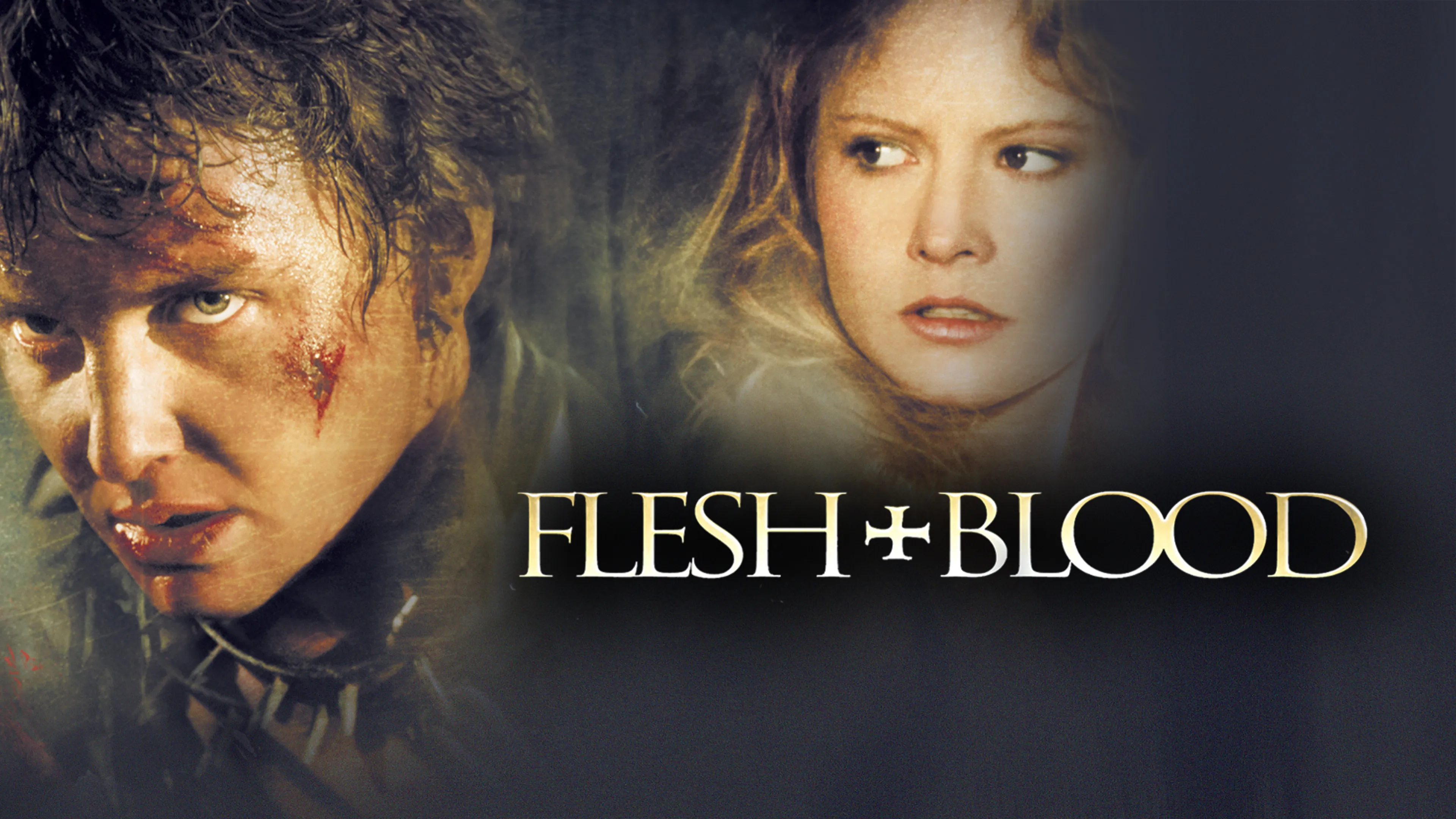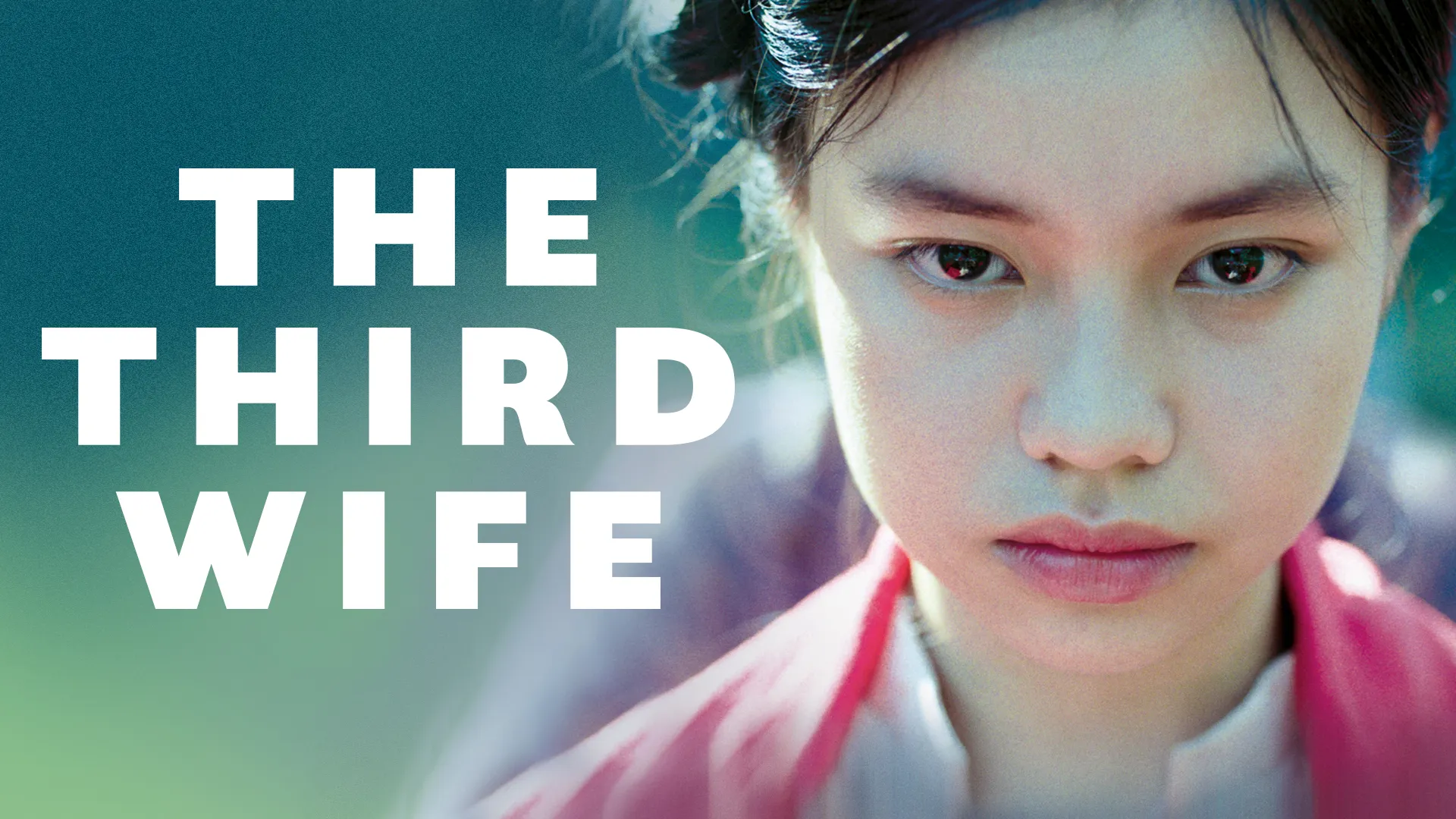Flesh+Blood (1985) is a gripping medieval adventure film directed by Paul Verhoeven, known for his raw and unfiltered approach to storytelling. Set in 1501 during a time of war, betrayal, and shifting loyalties, the film presents a dark and realistic portrayal of medieval life. Unlike traditional heroic tales, Flesh+Blood is filled with moral ambiguity, brutal violence, and complex characters who struggle for survival in a cruel and lawless world.
The story follows Martin (Rutger Hauer), a charismatic but ruthless mercenary, and his band of outlaws, who are betrayed by the nobleman Arnolfini (Fernando Hilbeck) after successfully capturing a city for him. Seeking revenge, Martin and his men seize a noblewoman named Agnes (Jennifer Jason Leigh), the fiancée of Arnolfini’s son, Steven (Tom Burlinson). This sets the stage for a tense and unpredictable power struggle where love, desire, and vengeance collide.

Unlike traditional medieval epics, Flesh+Blood does not romanticize the past. Instead, it presents a world where loyalty is fragile, violence is rampant, and survival depends on cunning and brute force. Paul Verhoeven’s direction ensures that every scene is infused with raw energy, making the film feel visceral and intense. The battle sequences are bloody and chaotic, reflecting the harsh reality of war rather than the choreographed heroism seen in many Hollywood epics.
Jennifer Jason Leigh delivers a captivating performance as Agnes, a woman caught between two men in a world where she has little control over her fate. Initially a victim, Agnes proves to be resourceful and manipulative, using her intelligence and sexuality to navigate the dangerous situations she faces. Her relationship with Martin is complex, shifting between fear, attraction, and survival instinct, making her one of the film’s most intriguing characters.

Rutger Hauer’s portrayal of Martin is equally compelling. Unlike traditional heroes or villains, Martin is neither entirely noble nor completely evil. He is a product of his brutal environment—capable of kindness yet unafraid to kill when necessary. His charisma makes him an engaging protagonist, even when his actions are questionable. The dynamic between Martin, Agnes, and Steven creates a layered and unpredictable narrative, filled with shifting allegiances and moral dilemmas.
The film’s cinematography and production design immerse viewers in a world of dirt, disease, and decay, emphasizing the harshness of medieval life. The castles, battlefields, and villages feel authentic, creating an atmosphere that enhances the film’s realism. Basil Poledouris’ haunting musical score adds to the tension and emotional depth, making every moment feel more powerful.

Beyond its action and romance, Flesh+Blood explores themes of power, corruption, and the fine line between civilization and savagery. It challenges the notion of heroism, showing that in a lawless world, survival often comes at a moral cost. Verhoeven does not shy away from controversial and disturbing moments, ensuring that the film remains thought-provoking and unpredictable.
In conclusion, Flesh+Blood is a raw and unflinching medieval epic that stands out for its brutal realism, complex characters, and moral ambiguity. With stellar performances, intense action, and a gripping narrative, it is a film that defies expectations and lingers in the mind long after the credits roll. Whether you are a fan of historical dramas or dark, character-driven stories, Flesh+Blood delivers an unforgettable cinematic experience.




